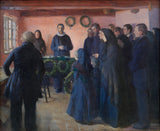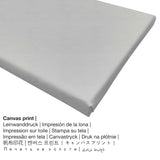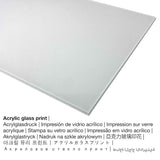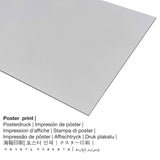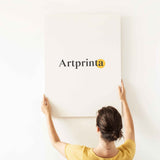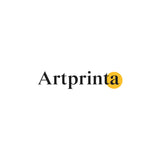Anna Ancher, 1891 - Olili ozu - mbipụta nka mara mma
Ụtụ gụnyere. Mbupu gbakọrọ na ndenye ọpụpụ.
Kedu ụdị akwụkwọ ebipụta m nwere ike iburu?
Maka mbipụta nka ọ bụla anyị na-enye ihe dị iche iche & nha dị iche iche. Anyị na-ahapụ gị ka ịhọrọ n'ime ụdị ndị a:
- Aluminom dibond mbipụta (ọla): An Aluminium Dibond print is a print material with an outstanding effect of depth, creating a modern look thanks to a non-reflective surface structure. A direct Direct Print on Aluminum Dibond is your ideal start to art replicas produced on aluminum.
- Kwaaji: A canvas print is a printed canvas mounted on a wooden stretcher. Besides, canvas print produces a cosy, appealing feeling. Canvas prints are relatively low in weight, which implies that it is easy to hang up the Canvas print without extra wall-mounts. A canvas print is suitable for all kinds of walls.
- Mbipụta enyo acrylic: An print on acrylic glass, which is sometimes described as a print on plexiglass, transforms your favorite original artwork into wonderful wall decoration and forms a great alternative option to dibond or canvas art prints. The artwork is being made with modern UV direct printing technology. This has the impression of stunning, vibrant colors. With an acrylic glass fine art print contrasts and details will be recognizeable thanks to the fine gradation.
- Mpempe akwụkwọ mmado ebipụtara na akwa akwa: The poster print is a UV printed sheet of cotton canvas with a slight structure on the surface. The poster is excellently suited for putting the art copy using a personal frame. Please note, that depending on the size of the poster we add a white margin of approximately 2 - 6cm round about the artwork, which facilitates the framing.
Nkwupụta iwu: We try our utmost in order to describe the art products in as much detail as possible and to illustrate them visually in our shop. Still, the colors of the print products and the print result can vary to a certain extent from the presentation on your screen. Depending on the screen settings and the quality of the surface, color pigments can unfortunately not be printed one hundret percent realistically. In view of the fact that our are printed and processed by hand, there may also be slight variations in the motif's size and exact position.
Ozi nka nka mbụ sitere na ụlọ ngosi nka (© - nke Statens Museum for Kunst (National Gallery of Denmark) - Statens Museum maka Kunst (National Gallery nke Denmark))
Na June 1854 Frederik Vermehren zutere onye ọzụzụ atụrụ dị afọ 82 na Jutland moors. Ọ na-awagharị, na-akpakọ, n'etiti oke ọkụ na atụrụ ya, naanị ụlọ ọrụ ya bụ nkịta na-ezu ike n'ụkwụ ya. N'ime ọnwa ole na ole sochirinụ, nhụnanya a bara uru butere otu n'ime ihe nkiri ndị bụ isi n'ime ime obodo n'akụkọ ihe mere eme nka Danish.
Man's affinity with nature Working his way through several pencil and painted studies, Vermehren slowly approached the final incarnation of the scene which is about much more than simply the old man on the moors. Taking the mundane scene as its point of departure, the picture before us is a rendition of man’s affinity with nature, of a simple life lived in harmony with nature and the God whose presence is felt in the grand landscape.
A metaphysical dimension The picture’s feel of having a metaphysical dimension is largely the result of the intensified light, the endless landscape, and – more specifically – the barrows in the background.
Eckersberg's view of art Within art history Vermehren is often referred to as a conservative guardian of the status quo. This is a consequence of the views he expressed during his many years as a professor, concluded with his retirement 1901: He unfailingly insisted on a view of art that originated with C. W. Eckersberg (1783-1853) in the beginning of the century. Thus, younger artists regarded him as a relic from days gone by. Back in the 1850s, however, Vermehren belonged to the progressive wing within Danish art and was one of the most active figures in the first rebellion against the Royal Danish Academy of Fine Arts’ resistance to change.
N’afọ 1891 na nwoke artist Anna Ancher created the work of art "A Funeral". The artwork is included in the digital art collection of Statens Museum for Kunst (National Gallery of Denmark) in Copenhagen, Denmark. We are happy to reference that the ngalaba ọha A na-etinye mpempe nka na nkwanye ùgwù nke National Gallery nke Denmark.: . N'elu nke ahụ, nhazi nke mmepụta dijitalụ bụ odida obodo na a akụkụ ruru nke 1.2: 1, nke pụtara na ogologo bụ 20% ogologo karịa obosara.
Data ndabere na artpiece
| Aha eserese: | "Olili ozu" |
| Nhazi nke ihe nka: | sere |
| Okwu mkpokọta: | nkà nke oge a |
| Nhazi oge: | 19th narị afọ |
| Emepụtara n'afọ: | 1891 |
| Afọ nka: | gbara afọ 120 |
| Egosiputara na: | Statens Museum maka Kunst (National Gallery nke Denmark) |
| Ebe ebe ngosi nka: | Copenhagen, Denmark |
| Weebụsaịtị ihe ngosi nka: | www.smk.dk |
| License: | ngalaba ọha |
| Site n'aka: | National Gallery nke Denmark |
Nkọwa ngwaahịa
| Nkewa ngwaahịa: | nka nka |
| Mmeputakwa: | dijitalụ mmeputakwa |
| Usoro mmepụta: | UV kpọmkwem obibi |
| Nlụpụta: | Germany |
| Stockdị ngwaahịa: | a na-achọ |
| Eji ngwaahịa emebere: | mgbidi mgbidi, mgbidi ndozi |
| Nhazi nka nka: | usoro odida obodo |
| Ụdị anya: | ogologo: obosara - 1.2: 1 |
| Nkọwa: | ogologo bụ 20% ogologo karịa obosara |
| Nhọrọ akụrụngwa: | akwụkwọ mmado (akwụkwọ kwaaji), mbipụta enyo acrylic (nwere ezigbo mkpuchi iko), mbipụta akwa akwa, mbipụta ọla (aluminium dibbond) |
| Nhọrọ nha nke akwa akwa n'elu etiti ihe na-agbatị (mbipụta kwaaji): | 60x50cm - 24x20", 120x100cm - 47x39", 180x150cm - 71x59" |
| Mpempe iko acrylic (nwere ezigbo mkpuchi iko) nha dị iche iche: | 60x50cm - 24x20", 120x100cm - 47x39", 180x150cm - 71x59" |
| Mpempe akwụkwọ mmado (akwụkwọ kwaaji) nha: | 60x50cm - 24x20", 120x100cm - 47x39" |
| Ụdị mbipụta aluminom: | 60x50cm - 24x20", 120x100cm - 47x39" |
| Igwe onyonyo: | mbipụta nka na-enweghị isi |
Tebụl nchịkọta ihe nkiri
| Aha onye nka: | Anna Ancher |
| okike onye nka: | nwoke |
| Nationality: | Danish |
| Ọrụ onye na-ese ihe: | onye na-ese ihe |
| Country: | Denmark |
| nhazi ọkwa: | omenkà nke oge a |
| Oge ndu: | 76 afọ |
| Afọ ọmụmụ: | 1859 |
| Amụrụ na (ebe): | Skagen |
| Nwuru: | 1935 |
| Obodo ọnwụ: | Skagen |
Nwebiisinka © | Artprinta.com (Artprinta)

